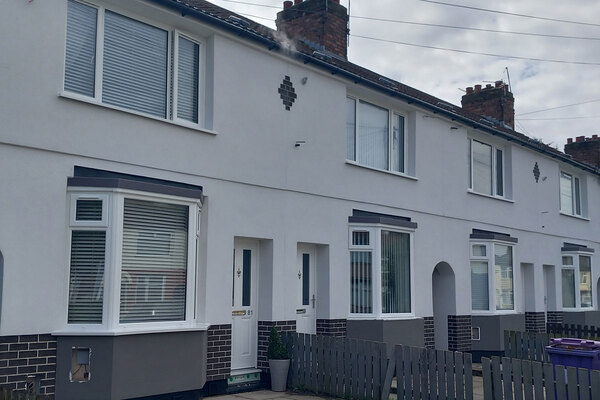Utilising outdoor space to meet net zero
Sam Jones from Ground Control shares six ‘green community’ measures social landlords can action today to accelerate progress towards net zero.
Last month saw the first ever Green Communities Summit. The purpose of the Summit was to get leaders together to see where the industry is in relation to meeting the Government’s green agenda. Housing colleagues from across the country attended, and all agreed, housing stock won’t meet the 2050 goal of net zero emissions, so the use of existing outdoor space has become an important element to reach those goals.
However, 75% of the Summit’s participants admitted they don’t feel equipped to utilise green spaces as part of their net zero journey.
At Ground Control we have found that there are six practical, proven steps - borne from our unique perspective, knowledge of the environment and carbon reduction experience - that housing association partners can action immediately.
So, how can social landlords be empowered to ‘green’ communities? The resulting report, Green Communities and the Journey to Net Zero: a discussion paper, identifies the following six learnings as current best practice:
- use your purchasing power to change to renewable energy suppliers at no additional cost (leverage ‘refer a friend’ schemes)
- change your vehicle policy. It can now be cheaper to use electric fleets
- explore where you may be able to undertake low-cost biodiversity activities such as rewilding areas of unused space or repurposing manmade materials to form wildlife habitats
- foster a community of ‘green ambassadors’ through tree planting and biodiversity projects on any space not walked on
- involve local residents with projects designed to increase engagement with nature and cultivate a sense of green space ownership this includes, wildlife recording, information boards, newsletters, opportunities to volunteer and resident wildlife groups
- invite your supply chain to share their activities to maximise opportunities
The Green Communities Summit also provided an opportunity for knowledge sharing and participants were inspired by examples of green communities in action.
- Sovereign Housing’s Lockdown Woods, a perfect example of the combined environmental and societal benefits that can be gained from a green community approach. As it matures, the woodland will help reduce the housing association’s carbon footprint and become a wellbeing haven for the community.
- Peabody’s Green Infrastructure Framework, which captures the housing association’s strategic approach to managing and utilising the unique blue and green spaces of Thamesmead and how this approach has helped identify the many benefits and beneficiaries from investment in green infrastructure.
- Nusheen Hussain shared experience from Home Group and how Newcastle-based green community projects considered green placemaking and biodiversity enhancement holistically. She encouraged all social landlords to consider customer, aspirations, inclusivity, accessibility, health & safety and ongoing maintenance, all in tandem when designing green spaces.
We know change is always difficult to manage and that is why tailored awareness training is key. It shouldn’t be costly either, all good contractors should provide this as part of their own commitments to social value.
Our aim is to continue work with Cambridge University’s Institute for Sustainable Leadership to develop science-based, verifiable measures which will inform green community planning, and help housing association partners make informed decisions around habitat creation, biodiversity net gain and carbon sequestration.



